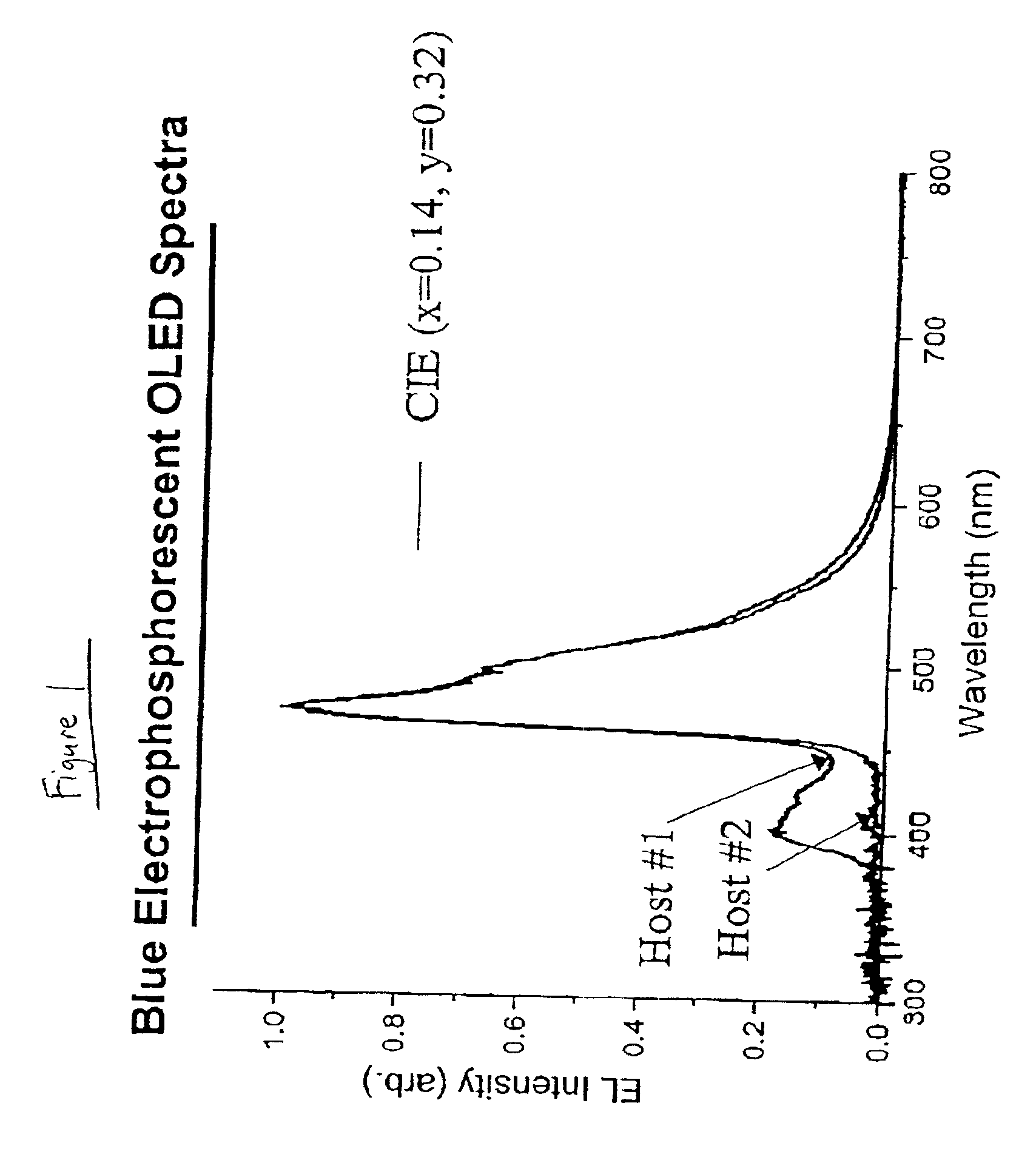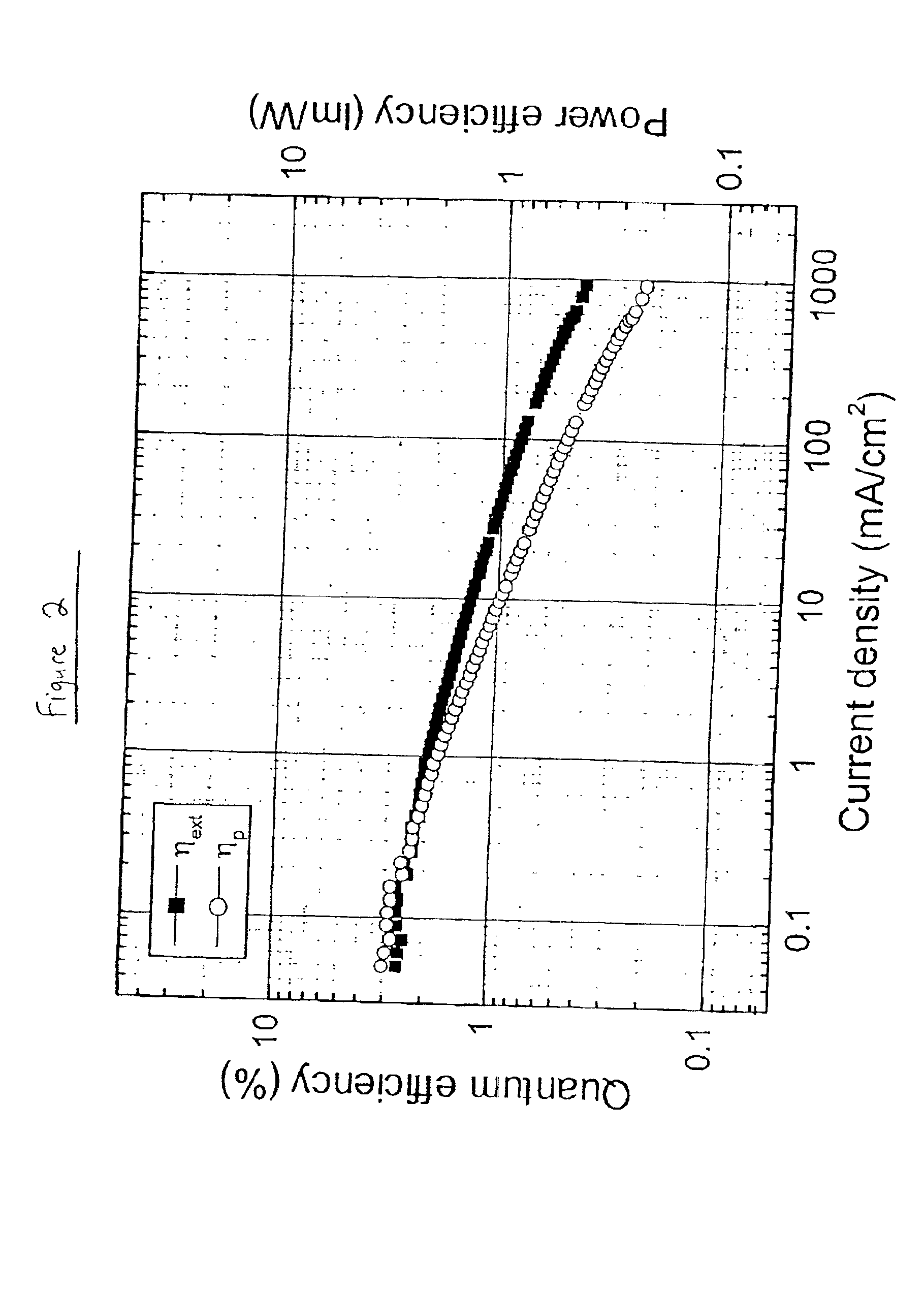Double doped-layer, phosphorescent organic light emitting devices
a light-emitting device and organic technology, applied in the direction of discharge tube/lamp details, organic semiconductor devices, discharge tubes, etc., can solve the problems of energy loss, energy loss, and inability to convert excitons in fluorescent devices to energetically unfavorable higher singlet excited states, etc., to achieve high efficiency levels
- Summary
- Abstract
- Description
- Claims
- Application Information
AI Technical Summary
Benefits of technology
Problems solved by technology
Method used
Image
Examples
example 1
A first HTL is first deposited onto an ITO (indium tin oxide) coated glass substrate. The first HTL consists of about 400 Å of R854. A second HTL consists of about 200 Å of R854, and is deposited onto the first HTL. The second HTL is about 6% doped with Ir(4,6-F2ppy)(pico). A first ETL consists of about 200 Å of TAZ, and is deposited onto the second HTL. The first ETL is about 6% doped with Ir(4,6-F2ppy)(pico). A second ETL of Alq3 having a thickness of about 400 Å is deposited onto the first ETL. The device is finished by depositing a Mg / Ag electrode onto the second ETL. This Mg / Ag electrode has a thickness of about 100 nm. All of the depositions are carried out at a vacuum less than 5×10−5 Torr. The devices are tested in air, without packaging.
FIG. 1 shows a depiction of the EL intensity as a function of wavelength for two different OLEDs. The first OLED (Host #1) has a ITO / R854 (450 Å) / TAZ:6%-Ir(4,6-F2ppy) (pico) (250 Å) / Alq3(450 Å) / MgAg layer structure, and the second OLED (Host...
PUM
 Login to View More
Login to View More Abstract
Description
Claims
Application Information
 Login to View More
Login to View More - R&D
- Intellectual Property
- Life Sciences
- Materials
- Tech Scout
- Unparalleled Data Quality
- Higher Quality Content
- 60% Fewer Hallucinations
Browse by: Latest US Patents, China's latest patents, Technical Efficacy Thesaurus, Application Domain, Technology Topic, Popular Technical Reports.
© 2025 PatSnap. All rights reserved.Legal|Privacy policy|Modern Slavery Act Transparency Statement|Sitemap|About US| Contact US: help@patsnap.com



